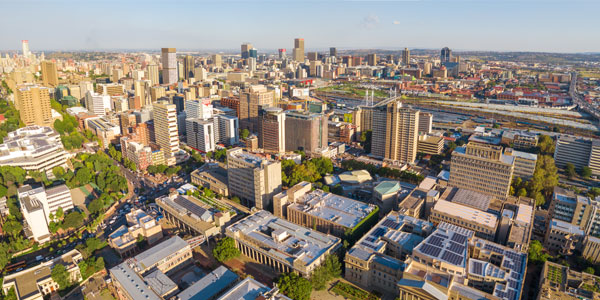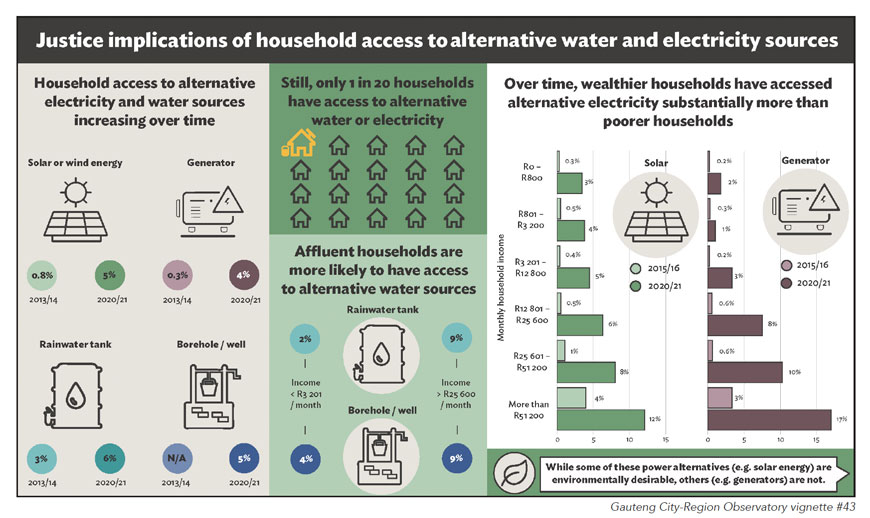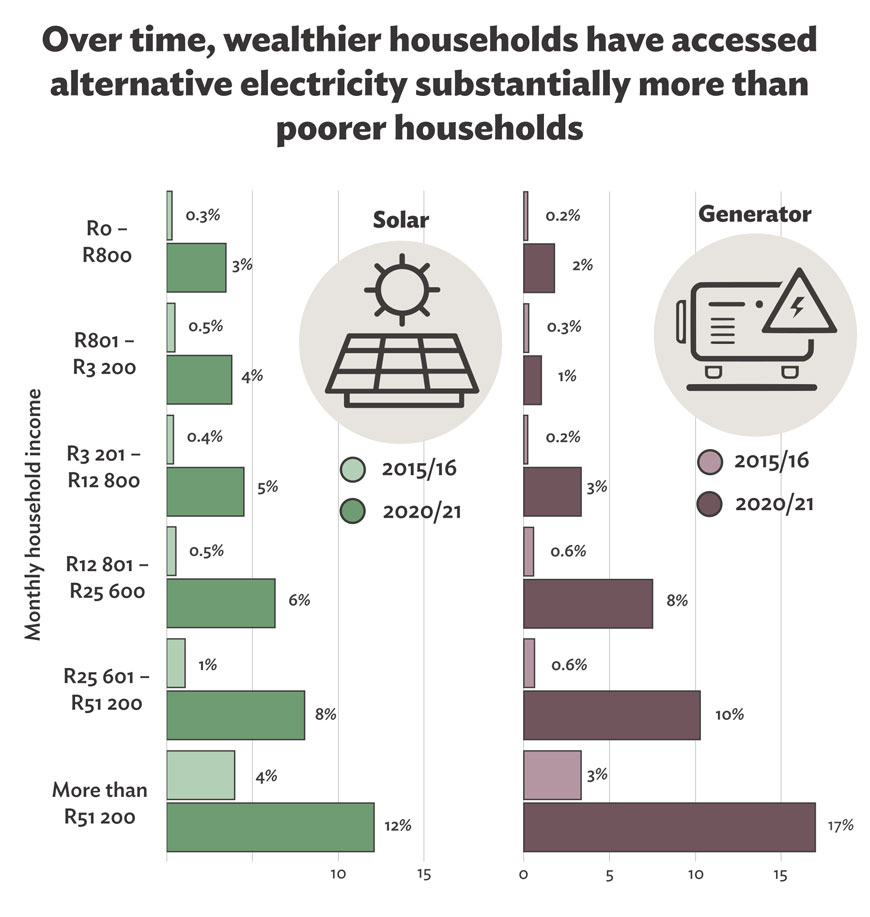Building sustainable cities
- Buhle Zuma
Long-term economic and social side-effects need to be considered when thinking about our cities’ energy solutions.
It is estimated that 55% of the world’s population resides in cities and that cities are directly responsible for around two-thirds of global energy consumption.
The influx of people to cities has increased since industrialisation as people seek better economic opportunities and a better quality of life.

Economic heart of darkness
Johannesburg, the economic heart of South Africa, has a population of approximately five million people and the number of residents increases by around five people every day, according to the City’s Integrated Development Plan Review (2018/2019).
As the main contributor to the country’s GDP and a lever of socioeconomic development, energy security is critical for this economic hub. However, the ongoing and escalating electricity cuts have proved disruptive to productivity, and there have been heightened demands for the City to provide solutions to the energy crisis.
At a city level, there seems to be a vacuum in providing leadership or driving access and supply to alternative energy that could relieve Johannesburg of its dependence on the failing national power supplier.
To ensure operational stability, Big Business has responded by either installing diesel powered generators or harnessing solar energy for a continued supply of electricity during power cuts. Data released by the Gauteng City Region Observatory (GCRO) at Wits University also show an upward trend in households using alternative sources of energy.
“The more affluent sectors of society are able to protect themselves against water and electricity interruptions,” says Christina Culwick Fatti, Senior Researcher at the GCRO and a PhD candidate.
However, this development does not bode well for low-income households, as every cent of reduced revenue deprives the municipality of money to provide services.
According to Culwick Fatti, the existing financial model for municipalities is set up so that high-end users who pay on time regularly cross-subsidise the poor.
“If the higher [income] users are generating their own electricity, then money is not going back to the municipality,” she says.

Off-grid cities
The social and climate change implications of the rich seceding from state-provided infrastructure networks is the focus of a research project called Off-Grid Cities, co-funded by the National Research Foundation (NRF) and the GCRO.
The core objective of the project is to explore how elite infrastructure transitions need to be integrated into debates and practices towards producing environmentally sustainable and socially just cities.
For Culwick Fatti, the grid is a useful way to manage the distribution of electricity. Furthermore, the City and municipalities should play a leading role in managing the energy crisis to avoid a fragmented society – those accessing the national grid, and those seeking to reduce their reliance on it – especially considering the role of cities in driving economic development.
While households are slowly driving the uptake of alternative systems, the mass movement to sustainable and environmentally friendly energy hinges on government creating an enabling environment.

Driving a just transition
There is no doubt that cities need to be less dependent on fossil fuels, such as coal, for their energy needs. However, discussions envisioning energy efficient cities must go beyond promoting large-scale and decentralised renewable energy generation, says Professor Daniel Irurah in the School of Architecture and Planning, Faculty of Engineering and the Built Environment.
“We need to re-imagine what Johannesburg, or any other city in South Africa, should look like in 10, 20 or 30 years to 2050,” he says.
This includes a blend of transport modes powered by biofuels, green hydrogen, and electric vehicles to add to existing interventions such as the Gautrain and the Rea Vaya Bus Rapid Transport (BRT) system, which aim to ease commuter congestion in the City.
Transport accounts for significant levels of direct energy consumption in the City. The process of producing fuel and operating vehicles results in carbon emissions, so energy efficient cities need to place this at the centre of discussions on the just energy transition.
“Green buildings that require less heating in winter and less cooling in summer will need to be common practice rather than a ‘nice to have’, as per prevailing practice,” says Irurah.
The added spin-off will be reduced noise and air pollution resulting in improved public health.
Irurah says cities need to push the debate from mitigation to climate change adaptation and think about how to cope with climate change threats such as water scarcity, heat waves, and food supply disruptions which will severely impair infrastructure performance and human productivity.
The long-term transition to climate-resilient and lower-carbon economy cities and societies is already underway and the core issue we must address is whether the transition will be inclusive or exclusionary. Inclusionary transitioning means long term sustainability while the exclusionary trend that we’re currently on does not.
Electrical energy for cleaner cities
Wits University is inextricably bound to the City of Johannesburg in which it was established a century ago. As a key stakeholder in the City, the University has a responsibility to contribute positively to the City-Region in which it operates. Wits researchers are exploring how buses – a key transport mode for thousands of Johannesburg commuters – can be made more efficient and less pollutant.
While loadshedding is wreaking havoc, it’s not the only energy-related crisis at play. Scenes of broken-down buses on the side of the road, notably at peak hours, frequently play out in parts of South Africa. Breakdowns, due to problems with internal combustion engines, render transport services unreliable. From an economic perspective, such delays can drive productivity lower and add to input costs.
“The key factor is that the engine has too many parts and several things can go wrong. The fewer the components, the better, and the electric bus has a lot fewer of them,” explains Dr Lesedi Masisi, Senior Lecturer in the School of Electrical and Information Engineering, whose research interests include electrical energy conversion, renewable energy, and the electrification of transportation.
In 2019, Lesedi began researching how to electrify the University’s diesel buses. “The three factors motivating our research are reliability, scale – as buses are bulk transport – and, thirdly, pollution. Combustion engines release significant amounts of greenhouse gases, whereas electrified buses are a step in the right direction towards cleaner cities,” he says.
However, there remains much to be done before Wits moves to entirely electric buses. “Our study has identified ‘range anxiety’, in other words, how far can the bus drive before requiring a recharge?” Masisi says, noting that the engine of diesel buses at best only makes use of 25 to 27% of the energy towards the wheels, with the rest guzzled by the heat under the process of conversion. Conversely, emission-free electric buses use above 85% of the electrical energy from the battery.
For a complete picture though, one must compare the well-to-wheel efficiency analysis of both the traditional bus and the electric bus. “Even if you have found solutions to other problems – from range anxiety to skills set shortage – electricity supply reliability is still a big concern in the country,” says Masisi.
- Buhle Zuma is Senior Communications Officer for Wits University.
- This article first appeared in Curiosity, a research magazine produced by Wits Communications and the Office of the Deputy Vice-Chancellor: Research and Innovation.
- Read more in the 15th issue, themed: #Energy. We explore energy research into finding solutions for SA's energy crisis, illuminate energy needs of people with disabilities, address the energy and digital divide in an unequal society, and investigate the origins of fire control.

